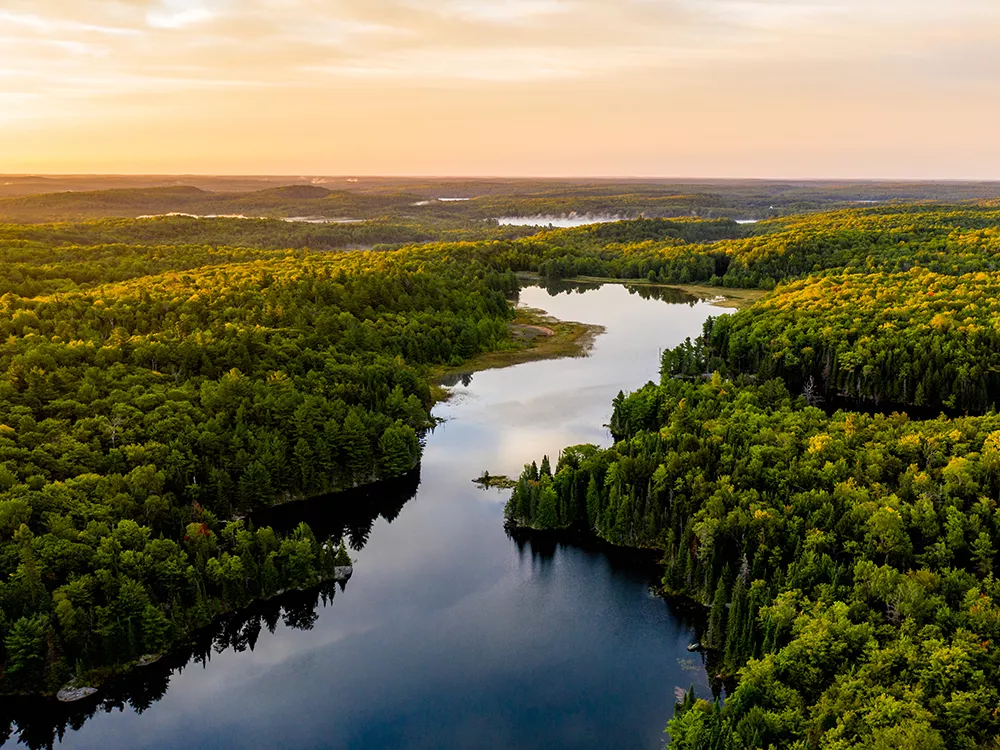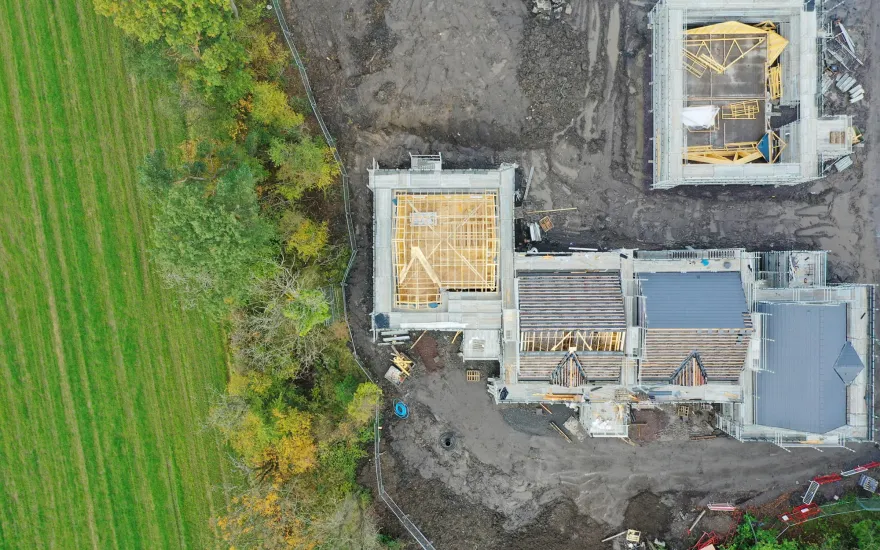Now live: The 2025 Canopy Report. Learn how Americans see trees. GET THE REPORT
Bulletin
Trees in Riparian Zones
Whether it is a creek small enough to jump across or the shore of a major river, America’s waterways and the land that surrounds them are valuable, finite resources. Action by individuals and communities is needed now to protect or restore the trees that complete the wholeness of riparian habitat.

The human attraction to water borders on the mysterious. Some claim this affinity has evolutionary roots.
Others believe it is simply due to fond memories. Playing in a creek during childhood would be an example. Still others take a more practical view — one that recognizes water as the foundation of our nation’s richness. From the first grist mills to today’s faucets, water provides uncountable benefits.
Whatever the reason, most people place a value on the silver threads of life that course through the forests, farms and communities of America. But it has not always been this way. Rather, we are emerging from a shameful period of treating waterways like flowing dumps, drainage ditches, or some mythical beast to be hurried away or contained in a cage. In the 1950s and 60s, for example, the U.S. Army Corps of Engineers spent over $30 million to convert Florida’s 98- mile, meandering Kissimmee River into a 56-mile canal. The resulting damage to adjacent lands and resources was so great that the Corps is now taking the straitjacket off portions of the river — at a cost more than double the original amount!
Fortunately, a new philosophy is replacing the mentality of finding “efficient” ways to move water through the land. Still, even today, there are communities, developers, and individual property owners that have not realized the potential of the riverbank or the tiny brook in their midst. This is especially true when the waterway serves as a property line or jurisdictional border. In all cases, however, we will never have more waterways than we have today. What we do to protect the quality of these waters and to maximize their contributions to the land and the people along their banks depends on what is called riparian management. The care of riparian trees — or their restoration on denuded sites — is an essential part of that management and a key to the future quality of our silver threads of life.
In This Bulletin
Here’s what’s inside:
- Benefits of Riparian Management – how caring for the trees and other vegetation along a waterway can benefit the community
- Treating Waterways with Tender Care – ways to build and care for forest buffers
- Communities in Action – examples of communities restoring and maintaining their riparian areas
- The Importance of Water – trees play a key role in protecting our water
